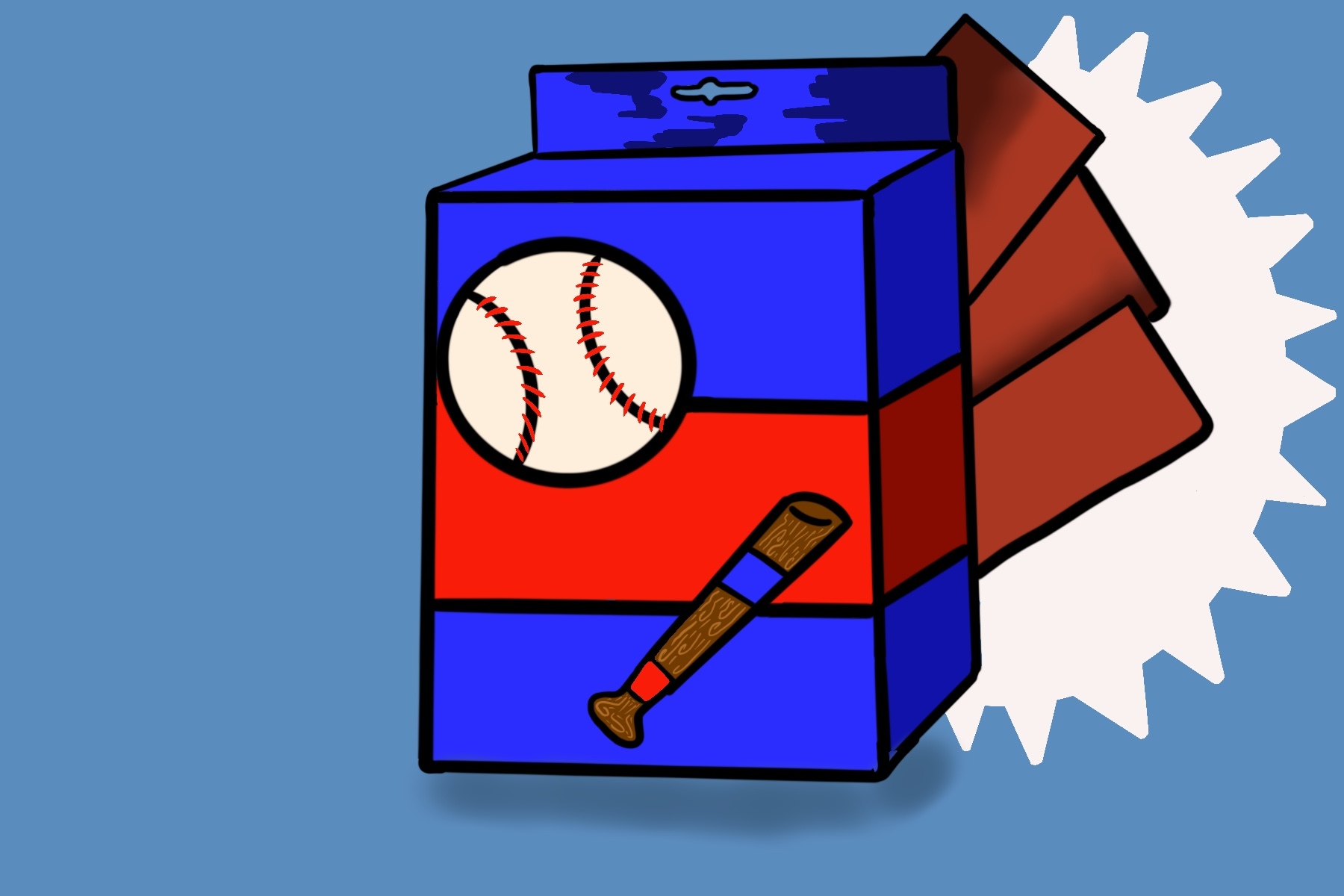The game of baseball has long been adored as “America’s Pastime” and has consistently evolved over the century with even more changes on the horizon. There’s about to be a universal designated hitter, players want a minimum salary of $630,000 in 2022 (compared to just $33,500 in 1982), and guys are now regularly throwing fastballs upward of 100 mph without anyone seeming to blink an eye.
Fans have collected baseball cards almost since the sport began. These cards serve as one of the coolest ways for fans to show commitment to their favorite team, player and sport, as well as a means for collecting and selling memorabilia. Like the game of baseball, the landscape of the card world has changed considerably since its inception. The practice of collecting baseball cards has been significantly monetized, and the once-hobby now has its marketplace with big-money investors.
Although it is deeply storied and centuries-old, the history of baseball cards is not as often told or appreciated as the sport it represents. Not because there isn’t a memorable story worth telling; in fact, it’s the opposite.
Part of what makes baseball cards interesting is how they’ve been used to bolster a free-market economy in several distinct ways throughout its 100-year history. For example, baseball cards were first created in the late 1880s by two competing cigarette companies — Goodwin & Company and Allen & Ginter — to outsell each other. It’s interesting to know the cards additionally functioned as a stiffener to combat cigarettes from getting crushed.
Interestingly, the production of baseball cards halted when cigarette companies formed a monopoly and operated as the American Tobacco Company for 19 years between 1890 and 1909. Because cigarette companies weren’t competing against one another, there was no need for them to stand out by including baseball cards in their product, and they essentially disappeared as a result.
When regulators successfully sued to break up the cigarette monopoly in 1909, tobacco companies and others immediately went back to including baseball cards in their products in hopes of turning a profit over their competitors. It was here when baseball cards expanded beyond cigarettes and appeared with candy wrappers and magazines. The popularity of collecting baseball cards soared due to its mass production across a multitude of industries, and it helped introduce fans to the game’s first set of superstars: Ty Cobb, Cy Young and Honus Wagner.
To put the era’s greatness in perspective, a Honus Wagner card produced in 1911 recently sold for over $6 million in August 2021.
World War I created a production strain, which greatly affected the American economy and ended the golden age. It was so severe that tobacco companies completely stopped making baseball cards again while magazine and gum cards kept the industry afloat.
Following the conclusion of the first world war, baseball cards soon enjoyed another triumphant albeit brief stay in American folklore; this time, top-rated players like Joe DiMaggio, Babe Ruth and Ted Williams were featured. Some cards from this era are still extremely valuable today.
But again, American involvement in another world war made paper scarce. The production of baseball cards stopped for a final time due to economic difficulties the country was facing in 1941. If you’ve been keeping count, that’s three times throughout American history when these cards’ production was halted due to economic strife — a pretty colorful history that’s rarely told.
Following the conclusion of World War II, baseball cards came back into production, and the variety of products sold with them expanded for an interesting reason. Back in the early 1950s, Bowman Gum began signing several players to exclusive contracts. The language within these contracts focused on the company’s ability to sell a player’s card with gum. So in response, rival Topps Chewing Gum initially sold its cards with caramel candy to avoid contractual disputes.
Topps bought Bowman Gum quickly and effectively monopolized the baseball card industry as the sole maker of baseball cards for nearly 30 years. The company lost its position as their sole producer when a lawsuit declared that other companies could finally join the mix in 1980, which brings us to the modern landscape.
After consumers were allowed to purchase from more than one company, baseball cards transitioned from collectible items to investments. Magazines like Beckett Baseball Card Monthly listed prices for cards and provided clear definitions for what a card in good condition looked like, making it easier for consumers to create a new secondary-card economy.
Upgrades to the baseball card marketplace like the creation of Upper Deck — a new company with better quality cards and a holograph to prevent counterfeit versions — helped bring the baseball card market to its peak in 1991 with $1.2 billion in new card sales.
Soon after, however, the industry spiraled into a free fall. Upper Deck began selling boxes of cards at $100 and shifted their focus onto older consumers with more disposable income. They made a mistake by indirectly pricing children (traditionally one of the biggest consumers of baseball cards) out of the baseball card game entirely.
The 1994-1995 MLB lockout was the longest in North American professional sports history and served to lessen public interest in baseball cards further; shortly after, there was no longer a demand to keep up with the significant investments many collectors had made in the prior era of rookie cards and many lost thousands of dollars in the collapse.
In the 20 years since the baseball card exodus of the 1990s, the internet has helped bring forward a renewed and refocused approach to collecting baseball cards. The digital age has made it easier for buyers to find rare cards with the click of a button, and the process for selling them has become far more centralized, with sites like eBay hosting thousands of sports card auctions every day.
Though both the production and acquisition of baseball cards have changed considerably over the span in which they’ve been made, they still serve as one of society’s coolest items with an even cooler history to boot.
















